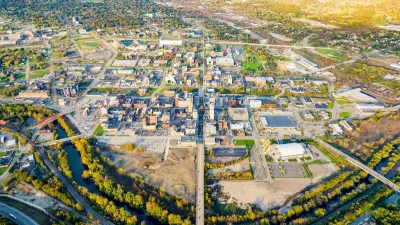Habitat for Humanity is working with 3D-printers to reduce the costs of construction and provide more housing for families in need.

Habitat for Humanity is enlisting the help of 3D-printing companies to fight the growing housing crisis and build more homes faster and more affordably. As Claretta Bellamy reports, high costs and material shortages have led developers, including Habitat for Humanity, to look for innovative solutions for producing low-cost housing to meet growing demand.
According to the article, a 3D-printed home built from concrete can save up to 15 percent on construction costs while still providing a "safe, affordable place to live" and the opportunity to own a home for low-income families.
"Using 3D printing to build homes provides numerous benefits, including a decrease in construction time due to the machine’s efficiency," Bellamy writes. According to Kirk Andersen of 3D-printing company SQ4D, the minimal need for on-site supervision also prevents injuries and saves builders money. And while traditional homebuilding takes six to 12 months, a 3D-printed home takes under six months to erect.
Housing advocates like Jeff Olivet, co-founder of Racial Equity Partners, say that in addition to programs like Habitat for Humanity, fighting decades of exclusionary housing policies and fixing the deeply entrenched affordability crisis will require "a national collective effort that also involves fixing housing policies and expanding services."
FULL STORY: How 3D printing can be the solution to the nation’s affordable housing crisis

Study: Maui’s Plan to Convert Vacation Rentals to Long-Term Housing Could Cause Nearly $1 Billion Economic Loss
The plan would reduce visitor accommodation by 25,% resulting in 1,900 jobs lost.

North Texas Transit Leaders Tout Benefits of TOD for Growing Region
At a summit focused on transit-oriented development, policymakers discussed how North Texas’ expanded light rail system can serve as a tool for economic growth.

Why Should We Subsidize Public Transportation?
Many public transit agencies face financial stress due to rising costs, declining fare revenue, and declining subsidies. Transit advocates must provide a strong business case for increasing public transit funding.

How to Make US Trains Faster
Changes to boarding platforms and a switch to electric trains could improve U.S. passenger rail service without the added cost of high-speed rail.

Columbia’s Revitalized ‘Loop’ Is a Hub for Local Entrepreneurs
A focus on small businesses is helping a commercial corridor in Columbia, Missouri thrive.

Invasive Insect Threatens Minnesota’s Ash Forests
The Emerald Ash Borer is a rapidly spreading invasive pest threatening Minnesota’s ash trees, and homeowners are encouraged to plant diverse replacement species, avoid moving ash firewood, and monitor for signs of infestation.
Urban Design for Planners 1: Software Tools
This six-course series explores essential urban design concepts using open source software and equips planners with the tools they need to participate fully in the urban design process.
Planning for Universal Design
Learn the tools for implementing Universal Design in planning regulations.
City of Santa Clarita
Ascent Environmental
Institute for Housing and Urban Development Studies (IHS)
City of Grandview
Harvard GSD Executive Education
Toledo-Lucas County Plan Commissions
Salt Lake City
NYU Wagner Graduate School of Public Service




























